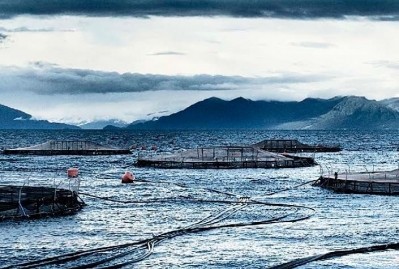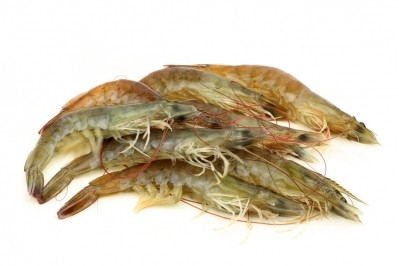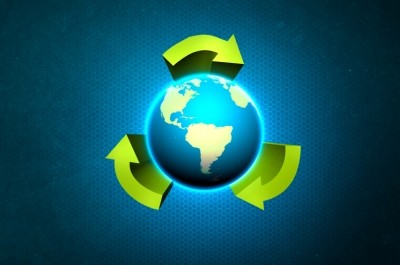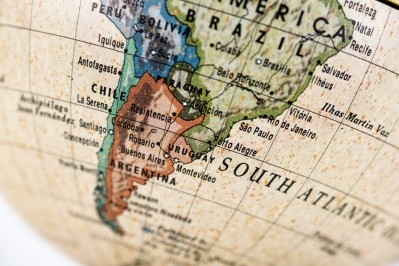Skretting looks to insects and algae as fishmeal alternatives

The Dutch group recently organized Aquavision 2014 in Norway around the theme of farmed fish being a key element in feeding the global population of some nine billion in 2050.
Jose Villalon, corporate sustainability director at Nutreco, told delegates during the three-day event in Stavanger that aquaculture can be used as a model for how protein should be farmed in the future as it has far lower feed conversion ratios compared to pig, chicken, lamb and beef production.
“Farmed fish should be recognized for being far more efficient and environmentally friendly than other center-of-plate proteins,” he said.
Aquaculture is a €50 billion global market that is growing at stable rates of 5 to 7% annually.
However, if the sector is to play a major role in helping to feed the world over the next 40 years, it is said that several sustainable fish feeds will be required.
Fish meal alternatives
“Fishmeal is a very good ingredient for fish feed, but it is a limited resource. As a leader in aquaculture we have allocated significant resources to find alternative feed raw materials. The level of fishmeal inclusion in farmed fish diets has been greatly reduced over the last decade,” said Marit Husa, communication manager for the Skretting group.
She told us that the division is evaluating a range of substitutes for fishmeal in terms of viability and cost such as algae, grain and insect meal, and is also assessing the feasibility of replacing fish oil with microalgae and soy.
Skretting, said Husa, has an annual research and development budget of around €13m.
The company said its aquaculture research center (ARC) in Stavanger has been involved in EU-wide projects over the past few years and, in addition, collaborates with research institutes in France, Spain and Italy on the nutritional needs of sea bass, sea bream and other marine species.
The ARC is also involved in a longer-term collaboration with a university in Japan as well as facilities in several different countries specializing in shrimp research.
“We want to make sure we have full control over the nutritional value and quality of our products,” said Husa.
The Nutreco owned fish feed producer launched MicroBalance four years ago. “This new technology made it possible to replace fishmeal with other ingredients without there being a negative impact on performance, growth, feed conversion ratio, health or fish quality.
In 2010, it enabled us to reduce the fishmeal inclusion levels [in salmon feed] from 25% to 15%, and, today, we can go as low as 5 to 10% fishmeal in fish diets.”
Sustainable development
With most of the population growth forecast to be in Asia and Africa, Skretting managing director, Stephen Rafferty, told the Aquavision 2014 audience that sustainable expansion into developing countries and new aquaculture regions should be high on the industry’s agenda, as should its desire to innovate by increasing yields while further controlling its raw material use.
Another increasingly important task for the sector is increasing the involvement of governments, regulatory bodies and NGOs to make sure that aquaculture remains a responsible industry, said Rafferty.
Competitive Norwegian salmon feed market
Meanwhile, Skretting faces growing pressure from competitors in the Norwegian salmon feed market.
The new 220,000 metric ton feed plant from Marine Harvest, the world’s largest salmon producer and Skretting’s largest customer in 2013, comes on stream next month.
ABN Amro analyst Maarten Bakker, looking at growth averages per year for salmon production in Norway, reckons that it will take two years to clear the overcapacity generated by the addition of Marine Harvest’s salmon feed output into the market.
And May saw Danish fish feed producer, BioMar, announce plans to invest more than €54 million ($73m) in a new production line that will expand its capacity in Norway by 30% or by 140,000t annually.
"Expanding our capacity is a major strategic move intended to consolidate our position in Norway. The overall Norwegian market is 1.7 million tons today, so our capacity expansion equals just over 8% of the total market consumption.
Considering the attractive historic and expected market growth, this year projected at 6% or about 100,000 tons, there is an ongoing need for capacity expansion," said BioMar CEO, Torben Svejgård.
The new production line is expected to be operational in 2016, and the company said it is currently weighing up where to locate the extra line, with its plant at Karmøy the most likely candidate at this stage.
Fish feed expansion plans
Nutreco is restructuring its fish feed business to compensate for the market developments in Norway, with diversification through expansion into other fish feed markets.
Earlier this month the Dutch company announced a joint venture with Nigerian catfish feed producer Durante, which is said to be a base for further expansion in the fast growing West African fish feed market.
And, in 2013, it acquired shrimp feed producer, Gisis, in Ecuador and tilapia feed maker, Hendrix Misr, in Egypt.












